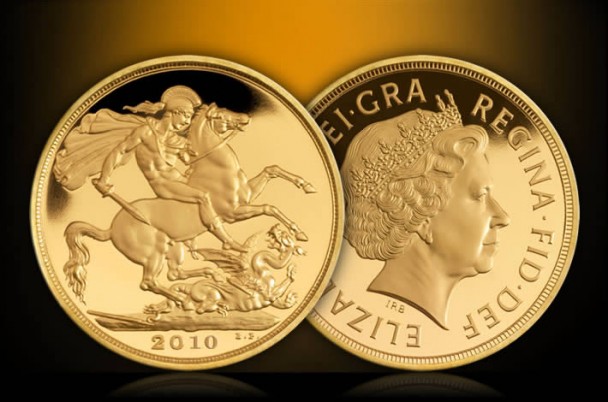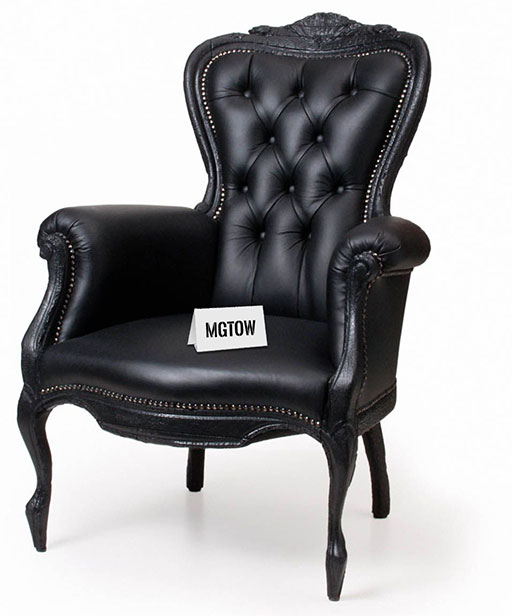This topic contains 32 replies, has 13 voices, and was last updated by ![]() Eyeswideopen 1 year, 8 months ago.
Eyeswideopen 1 year, 8 months ago.
- AuthorPosts
“Money Is Gold — and Nothing Else” [1]
James Rickards
May 3, 2018
James G. Rickards is the editor of Strategic Intelligence. He is an American lawyer, economist, and investment banker with 35 years of experience working in capital markets on Wall Street.
He has contributed as an advisor on capital markets to the U.S. intelligence community, and at the Office of the Secretary of Defense in the Pentagon. Rickards is the author of The New Case for Gold (April 2016), and three New York Times best sellers, The Death of Money (2014), Currency Wars (2011), The Road to Ruin (2016) from Penguin Random House.
He was the principal negotiator of the rescue of Long-Term Capital Management L.P. (LTCM) by the U.S Federal Reserve in 1998. His clients include institutional investors and government directorates. His work is regularly featured in the Financial Times, Evening Standard, New York Times, The Telegraph, and Washington Post, and he is frequently a guest on BBC, RTE Irish National Radio, CNN, NPR, CSPAN, CNBC, Bloomberg, Fox, and The Wall Street Journal.

Following the Panic of 1907 [2], John Pierpont Morgan was called to testify before Congress in 1912 on the subject of Wall Street manipulations and what was then called the “money trust” or banking monopoly of J. P. Morgan & Co.
[Y :
The Panic of 1907 – also known as the 1907 Bankers’ Panic or Knickerbocker Crisis – was a United States financial crisis that took place over a three-week period starting in mid-October, when the New York Stock Exchange fell almost 50% from its peak the previous year. Panic occurred, as this was during a time of economic recession, and there were numerous runs on banks and trust companies. The 1907 panic eventually spread throughout the nation when many state and local banks and businesses entered bankruptcy.The panic might have deepened if not for the intervention of financier J. P. Morgan, who pledged large sums of his own money, and convinced other New York bankers to do the same, to shore up the banking system. This highlighted the impotence of the nation’s Independent Treasury system, which managed the nation’s money supply, yet was unable to inject liquidity back into the market. By November, the financial contagion had largely ended,
Y]
In the course of his testimony, Morgan made one of the most profound and lasting remarks in the history of finance. In reply to questions from the congressional committee staff attorney, Samuel Untermyer, the following dialogue ensued as recorded in the Congressional Record:
- Untermyer: I want to ask you a few questions bearing on the subject that you have touched upon this morning, as to the control of money. The control of credit involves a control of money, does it not?
- Morgan: A control of credit? No.
- Untermyer: But the basis of banking is credit, is it not?
- Morgan: Not always. That is an evidence of banking, but it is not the money itself. Money is gold, and nothing else.
Morgan’s observation that “Money is gold, and nothing else,” was right in two respects. The first and most obvious is that gold is a form of money. The second and more subtle point, revealed in the phrase, “and nothing else,” was that other instruments purporting to be money were really forms of credit unless they were redeemable into physical gold.
My readers know that I am a big proponent of gold. We should all be mindful of Morgan’s admonition, and not lose sight of the way in which real wealth is preserved through manias, panics and crashes.
Today I’ll provide an overview on why I recommend gold in every portfolio, and why gold may be the best performing asset class in the years ahead.
Specifically, my intermediate term forecast is that gold will reach $10,000 per ounce in the course of the current bull market that began in December 2015. I recommend that investors keep 10% of their investable assets in physical gold (with room left in the portfolio for “paper gold” in the form of ETFs and mining stocks).
Here’s the analysis:
We begin with the 10% allocation. The first step is to determine “investable assets.” This is not the same as net worth. You should exclude your home equity, business equity and any other illiquid or intangible assets that constitute your livelihood. Do not take portfolio market risk with your livelihood or the roof over your head. Once you’ve removed those assets, whatever is left are your “investable assets.” You should allocate 10% of that amount to physical gold.
This gold should not be kept in a bank safe deposit box or bank vault. There is a high correlation between the time you’ll want your gold the most and the time banks will be closed by government order. Keep your gold in safe, non-bank storage.
The next part of the analysis concerns my $10,000 per ounce forecast for the dollar price of gold. This is straightforward.
Excessive Federal Reserve money printing from 2008–2015 combined with projected U.S. government deficits over $1 trillion per year for the foreseeable future, and a U.S. debt-to-deficit ratio of 105% rising to over 110% in a few years, leave the U.S. dollar extremely vulnerable to a collapse of confidence on the part of foreign investors and U.S. citizens alike.
[Y :
The groundbreaking work [5] of Professor Kenneth Rogoff (Thomas D. Cabot Professor of Public Policy and Professor of Economics at Harvard University) and Professor Carmen M. Reinhart (the Minos A. Zombanakis Professor of the International Financial System at Harvard Kennedy School) showed that beyond a debt-to-GDP of 90% a currency unit worth of input gives less than unit worth of returns. The system is unable to support growth
Y]That collapse of confidence will not happen in a vacuum. It will coincide with a more general loss of confidence in all major central banks and reserve currencies. This loss of confidence will be exacerbated by efforts on the part of Russia, China, Turkey, Iran and others to abandon dollars entirely and to bypass the U.S. dollar payments system.
[Y:
Currently the FFR at 1.75% is against a CPI inflation (YOY) of 2.1%. [7]
This may be the start of an inflation trend that the Fed are unable to control. US 10 year yields have spiked to 3% and are expected to rise further. Foreign buys are liquidating their hold of Treasuries – which means the US hedge, funds banks and other financial institutions will be forced to buy them. This will only increase their debt position.US bank assets are in trouble [3] stemming from too much debt exposure under ZIRP. Seeing we are now about a year since Yellen started serious rate rises, we note that the lag effect of policy decisions stated by Milton Friedman is working quite well [4]
Y]The evolution of oil pricing from dollars to IMFs special drawing rights, SDRs, will be the last nail in the dollar’s coffin. All of these trends are well underway now, but could climax quickly into a general loss of confidence in the dollar.
[Y
It is known in economic circles that the Special Drawing Rights (SDR) [6] is to replace the US Federal Reserve Note at some point in the near future. It is not known exactly when.The current push to to make the SDR digital or a DLT-permissioned system that would be used to qualify world trade. This will also require the e-SDR to be backed by gold or some PM equivalent.
Y]At that point, either the U.S. acting on its own or a global conference resembling a new Bretton Woods will turn to gold to restore confidence. Once that route is chosen, the critical factor is to set a non-deflationary price for gold that restores confidence, but does not lead to a new depression.
Here’s the math on how to compute a non-deflationary price of gold using the latest available data:
The U.S., China, Japan and the Eurozone (countries using the euro), have a combined M1 money supply of $24 trillion. Those same countries have approximately 33,000 tons of official gold.
[Y : The M1 money supply is the currency created by the Federal Reserve and sold at interest to the US Treasury and certain banks. This process kickstarts the debt process. This currency is used by banks to create loans and lending to public and private institutions. Y]
Historically, a successful gold standard requires 40% gold backing to maintain confidence. That was the experience of the United States from 1913 to 1965 when the 40% backing was removed.
Taking 40% of $24 trillion means that $9.6 trillion of gold is required.
Taking the available 33,000 tons of gold and dividing that into $9.6 trillion gives an implied gold price of just over $9,000 per ounce. Considering that global M1 money supply continues to grow faster than the quantity of official gold, this implied price will rise over time, so $10,000 per ounce seems like a reasonable estimate.
I believe this kind of monetary reset is just a matter of time. It could happen through a planned process such as a new Bretton Woods, or a chaotic process in response to lost confidence, heightened money velocity, and runaway inflation.
The portfolio recommendation is to put 10% of investable assets into physical gold as a diversifying asset allocation and as portfolio insurance. The following example demonstrates that insurance aspect.
For purposes of simplification, we’ll assume the overall portfolio contains 10% gold, 30% cash, and 60% equities. Obviously those percentages can vary and the equity portion can include private equity and other alternative investments.
Here’s how the 10% allocation to gold works to preserve wealth:
If gold declines 20%, unlikely in my view, the impact on your overall portfolio is a 2% decline (20% x 10%). That’s not highly damaging and will be made up as equity assets outperform.
Conversely, it gold goes to $10,000 per ounce, that’s a 650% gain from current levels, highly likely in my view. That price spike gives you a 65% gain on your overall portfolio (650% x 10%).
There is a conditional correlation between a state where gold goes up 650% and where stocks, bonds and other assets are declining. For this purpose, we’ll assume a scenario similar to the worst of the Great Depression from 1929 – 1932 where stocks fell 85%.
An 85% decline in stocks making up 60% of your portfolio produces an overall portfolio loss of just over 50%.
In this scenario, the gains on the gold (650% separately and 65% on your total portfolio) will more than preserve your wealth against an 85% decline in stocks comprising 60% of your portfolio (85% separately and 50% on your total portfolio). The 30% cash allocation holds constant.
So, if 60% of your portfolio drops 85% (about equal to the stock market drop in the Great Depression), and 10% of your portfolio goes up 650% (gold’s performance in a monetary reset) you lose 50% of your portfolio of stocks, but you make 65% on your portfolio on gold.
Your total wealth is preserved and even increased slightly. Total portfolio performance in this scenario is a gain of 15%. That’s the insurance aspect at work.
In summary:
1. Gold has asymmetric performance characteristics. It has limited downside (20%) but substantial upside (650%).
2. The gains on gold are likely to come at a time when stocks are crashing. That’s an example of conditional correlation.
3. In the scenario where gold rises 650% and stocks fall 85%, the gain on gold (10% allocation) exceeds the loss on stocks (60% allocation), so the overall portfolio is enhanced.
Investors without an allocation to gold will be wiped out. Those with a 10% allocation will have survived the storm with their wealth intact. That’s why I recommend gold.
Jim Rickards
for The Daily Reckoning[Y: Even if there is no real predisposition to gold, the individual can invest in gold and silver Eagles that may be of use to buy essentials or for other emergencies during a financial crash. The individual loses nothing if the worst does not happen. Y]
Citations
[1] https://dailyreckoning.com/money-gold-nothing-else/
[2] https://en.wikipedia.org/wiki/Panic_of_1907
[3] https://www.zerohedge.com/news/2018-05-04/banks-bullion-bruised-bitcoin-bonds-bounce
[4] https://www.zerohedge.com/news/2018-05-04/taking-pulse-weakening-economy
[5] https://press.princeton.edu/titles/8973.html
[6] https://en.wikipedia.org/wiki/Special_drawing_rights
[7] http://www.usinflationcalculator.com/inflation/current-inflation-rates/It took me awhile to warm up to the idea of holding gold as an investment, but after making the leap, I will always own some gold. I keep my allocation at around 20%.
"I've been thinking about what it would be like if we got back together."
"You know it's too late for that."Do you actually hold any gold or just pieces of paper saying that you do?
http://www.leavemeansleave.eu
Do you actually hold any gold or just pieces of paper saying that you do?
Nearly all paper, to be honest.
Maybe I’m misguided, but I see it as less risky than physical gold.
1) Physical gold must be held and stored securely. It can be lost, destroyed, or stolen.
2) Storing the gold securely in a vault or safe deposit box might make it unavailable in your time of need anyway.
3) There are some incredibly fantastic counterfeit gold coins and bars out there that would surely fool a novice like myself. I think coins are probably harder to fake, so if I wanted a more substantial holding in physical gold, I’d probably go that route.
What are your thoughts on it, BS?
"I've been thinking about what it would be like if we got back together."
"You know it's too late for that."Do you actually hold any gold or just pieces of paper saying that you do?
Physical – Gold and Silver eagles from REPUTABLE dealers only.
No ETF’s. No options. No other hare-brained schemes.
1) Physical gold must be held and stored securely. It can be lost, destroyed, or stolen.
2) Storing the gold securely in a vault or safe deposit box might make it unavailable in your time of need anyway.
3) There are some incredibly fantastic counterfeit gold coins and bars out there that would surely fool a novice like myself. I think coins are probably harder to fake, so if I wanted a more substantial holding in physical gold, I’d probably go that route.
It is not hard to store coins at home under lock and key. Just don’t tell anyone! Gold does not take up much space and neither does silver.
Everyone is worried about counterfeit but this is usually only if you go to the shop-at-the-corner. Go to a reputable dealer and have it tested before you buy it. You can bring someone who can do this for you s well before you buy.Having some gold is an insurance policy against inflation and financial “end of the world” scenarios.
One has to weigh the opportunity cost of owning gold vs. what one could earn with other investments. Gold doesn’t earn interest or have an economic potential like real estate, shares etc. It just sits there.
In 1933, in USA, citizens holding any more than a small amount of gold was made illegal, with penalties of confiscation, fine or imprisonment. This law was removed in 1974.
All fiat currencies devalue or eventually become defunct. With so many people willing to chase Bitcoin, who knows what the next preferred medium of exchange for the masses will be— dollar, Bitcoin, Fedcoin, gold, or something we don’t even know of yet.
I'm going my own way. Maybe I'll see you there.
All fiat currencies devalue or eventually become defunct. With so many people willing to chase Bitcoin, who knows what the next preferred medium of exchange for the masses will be— dollar, Bitcoin, Fedcoin, gold, or something we don’t even know of yet.
Thank you for your post and welcome.
I personally doubt anything not based on a physical medium like gold can survive over a long period. Cryptos by themselves are media of exchange – without a way to derive their inherent worth (as is happening now) there will be no practical way they can achieve real stability – inside or outside the Fed or IMF banking system.
Having some gold is insurance policy against inflation and financial “end of the world” scenarios.
It’s a good hedge against inflation. It’s virtually useless in SHTF or other “end of the world” situations.
The reason gold is useless in SHTF situation was illustrated in economic collapse situations like those seen in Argentina twenty years ago or currently in Zimbabwe and Venezuela is that your Maple Leaf, Eagle, or Krugerrand coins represent too much purchasing power to be used.
It’s as if all you have are $10,000 bills and there is no way to make change.
Gold may help you bribe border guards, purchase a vehicle, or “charter” boats and planes for an escape. It won’t buy food, fuel, repairs, or meet any of you other other “daily” needs. What replaces money in these situations is either currency from other nations or barter involving goods and skills.
Do not date. Do not impregnate. Do not co-habitate. Above all, do not marry. Reclaim and never again surrender your personal sovereignty.
The reason gold is useless in SHTF situation was illustrated in economic collapse situations like those seen in Argentina twenty years ago or currently in Zimbabwe and Venezuela is that your Maple Leaf, Eagle, or Krugerrand coins represent too much purchasing power to be used.
There are two conditions here : during a crisis and after a crisis.
During a crisis individuals would NOT use their gold for the reasons you mention. It would be appropriate to use silver – that is what silver is for. It is expected that silver eagles may go up to $500 an oz (1:20 ratio as in the last crisis) but this is a maxima.
That is sufficient for weekly needs and for emergencies.
After the crisis. Any stocks and bonds may take another 20 years to reach their bought value. This is where gold comes in as you said.
It is not expected that full anarchy conditions would eventuate in the USA similar to Venezuela or Zimbabwe. The banks and governments have been planning for this scenario for some time so they have made provisions for some sort of contingency in the interim.
People used to buy gold sovereigns.
http://www.leavemeansleave.eu
People used to buy gold sovereigns.
Still available. it is quite popular worldwide.

I bought a lot of silver around 10 years ago when the price was $50 an ounce and every one thought it was going to the moon.
It’s now $16. A terrible investment.
I’m not buying any more silver, but I’m not selling what I have. I’ll hold on to it in case of a SHTF scenario or sell it if it hits three figures.
Only keep a small part of your investments in precious metals.
Remember guys, the people who are most bullish on precious metals are usually the ones who are also selling it.
The greatest tragedy in life is to spend your whole life fishing only to discover that it was not fish you were after. - Henry David Thoreau
Ultimately, it is those with the guns, not the gold, whom make the rules.

Anonymous1The panic might have deepened if not for the intervention of financier J. P. Morgan, who pledged large sums of his own money, and convinced other New York bankers to do the same, to shore up the banking system.
That is a truly hilarious statement considering JP Morgan and his co-conspirators caused the “Panic of 1907.”
They cause the problem and then they pose the solution. Works every time and they get applauded for being self-less Heroes dedicated to Philanthropy. LMAO.
The only value Gold actually has is in the Electronics Industry. Everything else is pure speculation for the Rich to get Richer.
Ultimately, it is those with the guns, not the gold, whom make the rules.
Quoted for historical proof.
There was a time in my life when I gave a fuck. Now you have to pay ME for it
There are two conditions here : during a crisis and after a crisis.
“During a crisis” in the SHTF situation Vic mentioned. “After a crisis” is the inflation situation Vic also mentioned. Precious metals have a different worth in each.
It would be appropriate to use silver – that is what silver is for.
Oddly enough, silver isn’t and wasn’t used SHTF situations I listed. Barter, and to a lesser extent, foreign currency were and are used instead.
It is expected that silver…
Read Scorpion’s post and learn the difference between expectations and reality.
I’ve a colleague who as an adult lived through Argentina’s four year economic meltdown along with his extended family. The gold and silver they owned – despite government policies to the contrary – did very little for them.
Once they were able to visit Uruguay and sell some gold there at a very depressed price because everyone else from Argentina with gold was doing the same thing. They then bought dollars at a premium because you had to buy Uruguayan pesos first, pay a tax, buy dollars, and pay another tax because Uruguay knew why you as an Argentine were in Uruguay wanting to buy dollars. A large percentage of the dollars they bought were used as bribes to re-enter Argentina. The end result of their gold selling trip was so meager they didn’t bother to do it again.
The only real accomplishment gold provided them involved sending a cousin/nephew to Italy to live with relatives and attend university. While that was nice, but it didn’t put beans on the table, provide kerosene for the lamps, fix the generator, or buy a single bar of soap.
There is reality, which can be learned from any number of the memoirs and other accounts of the situations I listed, and then there are prepper’s fantasies. It pays to learn the difference.
Do not date. Do not impregnate. Do not co-habitate. Above all, do not marry. Reclaim and never again surrender your personal sovereignty.
Gold and Silver eagles from REPUTABLE dealers only.
Pay cash.
Don’t leave a paper trail for a desperate government to follow when they decide to confiscate gold again.
… is that your Maple Leaf, Eagle, or Krugerrand coins represent too much purchasing power to be used.
It’s as if all you have are $10,000 bills and there is no way to make change.
Yes.
I was recently offered a Gold Buffalo, but declined for this very reason.
That is a truly hilarious statement considering JP Morgan and his co-conspirators caused the “Panic of 1907.”
Yes it is hilarious but also true they did the bail out – which is why they got into trouble with Congress and the Treasury over what they initially did.
I’ve a colleague who as an adult lived through Argentina’s four year economic meltdown along with his extended family. The gold and silver they owned – despite government policies to the contrary – did very little for them.
Once they were able to visit Uruguay and sell some gold there at a very depressed price because everyone else from Argentina with gold was doing the same thing. They then bought dollars at a premium because you had to buy Uruguayan pesos first, pay a tax, buy dollars, and pay another tax because Uruguay knew why you as an Argentine were in Uruguay wanting to buy dollars. A large percentage of the dollars they bought were used as bribes to re-enter Argentina. The end result of their gold selling trip was so meager they didn’t bother to do it again
“During a crisis” in the SHTF situation Vic mentioned. “After a crisis” is the inflation situation Vic also mentioned. Precious metals have a different worth in each.
To both these responses.
At present gold and silver are manipulated in COMEX and LGX using futures. That is why the value of both are extremely undervalued. Anyone trying to barter gold or silver at this point in time will still have to pay almost the extraction price. So no – the use of silver or gold in today’s undervalued market will not work.
The reason of holding gold and silver is for the time when the paper futures and manipulation end together with fiat currency trades. At that point in time the real value of them metals will hold. Every country is stocking up gold except the USA and UK.
Read Scorpion’s post and learn the difference between expectations and reality.
I’ve a colleague who as an adult lived through Argentina’s four year economic meltdown along with his extended family. The gold and silver they owned – despite government policies to the contrary – did very little for them.
Again you are talking about the manipulated PM prices in today’s world. As I said before this will not work. The black market will trade gold less than most other items and there is no advantage to other types of currency or asset.
When I talk about ‘The Crisis’ it is not the regular events that happen in an economically unstable country. It is when the US reserve currency collapses together with the paper futures contracts for PMs.
Once they were able to visit Uruguay and sell some gold there at a very depressed price because everyone else from Argentina with gold was doing the same thing. They then bought dollars at a premium because you had to buy Uruguayan pesos first, pay a tax, buy dollars, and pay another tax because Uruguay knew why you as an Argentine were in Uruguay wanting to buy dollars. A large percentage of the dollars they bought were used as bribes to re-enter Argentina. The end result of their gold selling trip was so meager they didn’t bother to do it again.
This is an important point, OldBill. When people rush to do the same thing at the same time, it’s what’s called a crowded trade.
When this occurs, the desperate traders lose. If everyone is desperate to sell their gold, prices will depress. This is what occurred in the situation you described.
Gold is a store of value, but, like anything, if there are too many desperate people on one side of a trade, you want to be on the other side.
Those buyers of gold on the Uruguay side took full advantage and made an absolute killing.
Incidentally, I don’t hold gold for a SHTF situation at all. I think if we do have a serious meltdown, we’re all screwed. I hold it as a hedge against unfavorable market movements and/or US dollar weakness.
"I've been thinking about what it would be like if we got back together."
"You know it's too late for that."- AuthorPosts
You must be logged in to reply to this topic.

921526
921524
919244
916783
915526
915524
915354
915129
914037
909862
908811
908810
908500
908465
908464
908300
907963
907895
907477
902002
901301
901106
901105
901104
901024
901017
900393
900392
900391
900390
899038
898980
896844
896798
896797
895983
895850
895848
893740
893036
891671
891670
891336
891017
890865
889894
889741
889058
888157
887960
887768
886321
886306
885519
884948
883951
881340
881339
880491
878671
878351
877678













